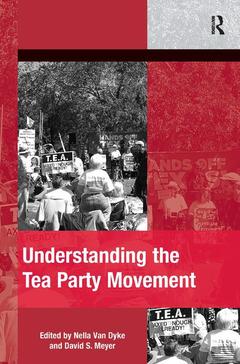Description
Understanding the Tea Party Movement
The Mobilization Series on Social Movements, Protest, and Culture Series
Author: Dyke Nella Van
Coordinator: Meyer David S.
Language: English
Subject for Understanding the Tea Party Movement:
Keywords
DLA Piper; supporting; Tea Party Express; groups; Tea Party; activists; Tea Party Movement; patriots; Tea Party Events; express; Tea Party Group; local; Tea Party Activists; social; Tea Party Patriots; protests; Tea Party Supporters; progressive; Local Tea Party; movements; Tea Party Rally; Tea Party Candidates; Educational Materials; Tea Party Protests; Tea Party Organizations; Power Devaluation; Piper; Political Parties; Tea Party Leaders; Social Movement Partyism; Extra-institutional Protest; Citizens United Supreme Court Decision; Klan Leaders; Movement Infrastructure; National Tea Party
Publication date: 03-2014
Support: Print on demand
Publication date: 03-2014
Support: Print on demand
Description
/li>Contents
/li>Biography
/li>
These books may interest you

The Tea PartyThree Principles 33.95 €



